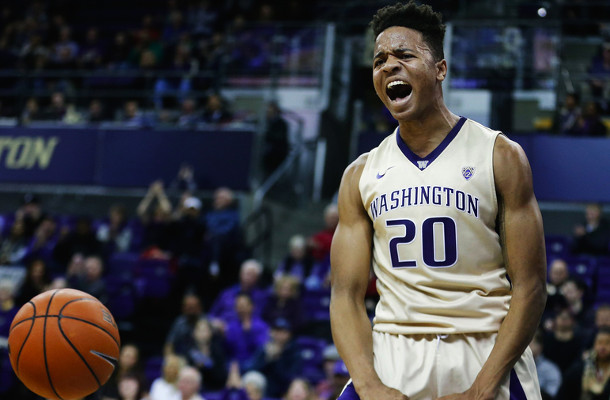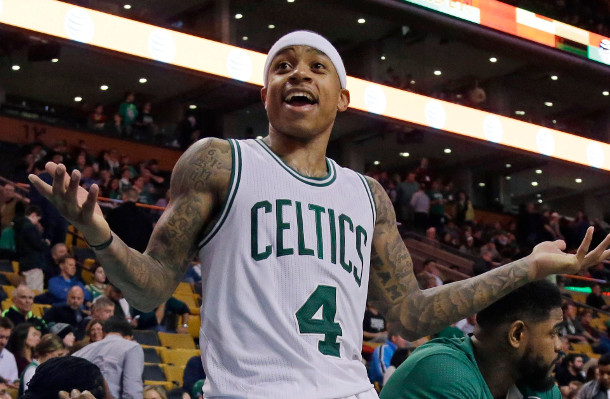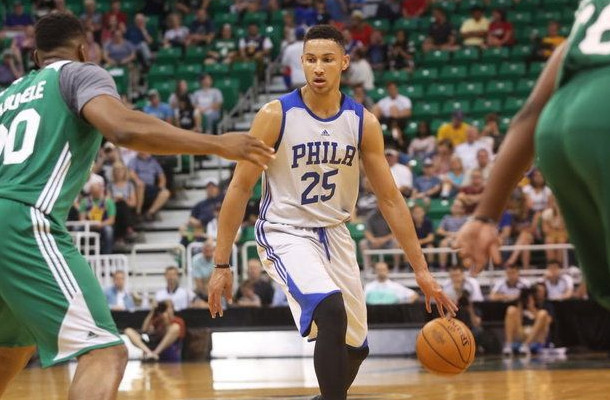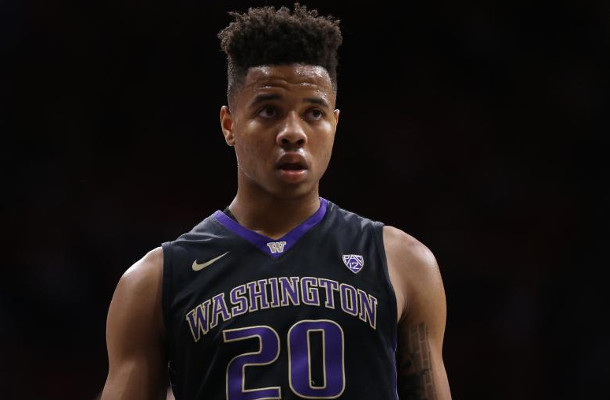Sixers offensive struggles related to talent, not execution
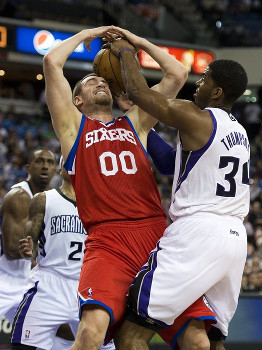
So far during the preseason, three things have stood out while I watched the Sixers games: committing way too many turnovers, giving up far too many offensive rebounds, and generating good offensive looks.
They’ve also struggled mightily in the half-court.
Say what? It sounds like I just contradicted myself.
After the Sixers lost by a score of 127-97 to the Brooklyn Nets (a team which sat Paul Pierce, Andrei Kirilenko, and Jason Terry for the game, and played starter Kevin Garnett less than 15 minutes), coach Brett Brown lamented the teams half-court struggles and blaming them on a lack of time to focus on that aspect of the game. Thaddeus Young said the team had implemented maybe 25% of the playbook.
The turnovers and the horrible defensive rebounding will obviously hurt a half-court offense (and defense). Turnovers are a wasted possession, although this could partly be due to the team trying to do too much and partly related to the low overall talent level. And while the team thus far has done a very good job of pushing the tempo out of a miss, the inability to grab a defensive rebound limits their ability to run, thus forcing them into more reliance on generating offense in the half-court.
Even though it’s not necessarily the point of this article, it’s worth noting just how well the team has done pushing the ball after a miss. In the table below I have included the Sixers total number of defensive rebounds through the first 4 preseason games, how frequently they pushed the ball after forcing a miss, and also their defensive rebounding percentage, and compared that to the cumulative output of their opponents.
Note, “pushing the ball” doesn’t necessarily mean a transition opportunity, it just means how frequently they push the ball up the court. The end result could also be them eventually slowing it down and getting into their half-court offense quicker than normal, which itself is valuable as it forces teams to defend before their defense is really set.
(I included defensive rebounding percentage in there to illustrate just how bad the Sixers have been on the defensive glass, as just looking at pure defensive rebounding totals may paint a picture that is not necessarily true).
| Team | Def Rebs | % pushing ball | Def Reb% |
|---|---|---|---|
| 76ers | 119 | 86.6% | 62.8% |
| Opponent | 132 | 49.2% | 73.7% |
However, from what I have seen (the Charlotte game notwithstanding), the problem has not primarily been about execution. The shot chart has been excellent, with the team generating open three point looks and getting into the paint with regularity. They have set screens, made hard cuts, and quick passes.
Even in Monday’s game against Brooklyn, the Sixers attempted half as many midrange two point jump shots (9) as the Nets did (18), they took 25 three point attempts and got to the line 35 times.
Below is a table with how many midrange jump shots the Sixers have taken, compared to how many their opponent has.
| Team | Midrange jump shots |
|---|---|
| Philadelphia | 26 |
| Opponents | 72 |
More three-point shots, more shots at the rim, less contested long two point jump shots.It’s a strategy that usually leads to success.
Except it isn’t.
I went through and watched 31 half-court field goal attempts against the Nets that the Sixers were able to generate at the rim / in the paint. They shot 11-31 in those attempts. Eleven-for-thirty-one. That’s pitifully bad.
The problem thus far has not been an inability to execute, as they have gotten fairly good looks, especially respective of their talent level. Their problem has been that they are not offensively talented enough to finish those looks. Open jump shots and point black attempts at the rim are missed with alarming (or exciting, depending on perspective) regularity.
Here is an example. It’s far from the only example, and not even the best. It’s just one that I just happened to notice while re-watching tape from the Nets game.
Here we have Spencer Hawes at the top of the key, about to perform a fairly frequent dribble hand-off. Michael Carter-Williams is about to clear out, giving Hawes and Evan Turner the room to run the two-man game, clearing the lane for Hawes to dive to the hoop. Yes, he actually dove rather than did a pick and pop. Go Brett Brown.
Here is the play post-screen. The first thing that jumps out is Hawes actually initiated contact, something that has rarely happened in years past. It allowed Evan Turner the ability to get a step on Joe Johnson, forcing Brook Lopez to rotate over, clearing the lane for Hawes to dive.
At this point, the play has shapped up nicely. Brook Lopez is almost entirely focused on Turner and Michael Carter-Williams has drawn his man out of the zone. Turner has a nice lane to pass the ball into, and Hawes should be able to convert it into an easy dunk.
Except it doesn’t. Kevin Garnett rotates over and provides just enough resistance to slow Hawes down. Hawes, of course, doesn’t go up strong, which would have been a sure-fire foul on Garnett with Garnett firmly in the restricted area. Instead, by changing his trajectory, he holds Hawes up long enough for Lopez to recover and block the shot.
Now, it wasn’t *perfect* execution, as Thaddeus Young should have been either further down the baseline or around the elbow area to try to pull Garnett away from the hoop, or at least give Hawes an easier option to pass to if Garnett does rotate. That being said, it was executed well enough for Hawes to either get a good look or, at worst, draw the foul. A more athletic, more assertive, better finishing big man and that play scores points without any improvement in execution.
But this is exactly what I want to see. I understand Brown’s perspective when he harps on execution and not being far along in learning the playbook, since that’s what he can control. It doesn’t make a whole lot of sense for Brown to lament about the lack of talent on the team as that’s not something that is likely to change during the course of the season. His goal is to get them to learn, make them better, and get them to execute. So it makes sense for him to focus on that.
But the reality is, they’re just not good enough. So when I see the team executing well (not perfectly, by any stretch), I get excited. Not for what they are able to accomplish this season, but for what Brown will be able to do when he has an appropriate level of talent around him. I want to know that Brown will emphasize the right things, that he can teach players how to execute, and that he can get them into good habits. It may not pay dividends now, but it will in the future.
So far so good.
Related Posts
-
reedsinwv






